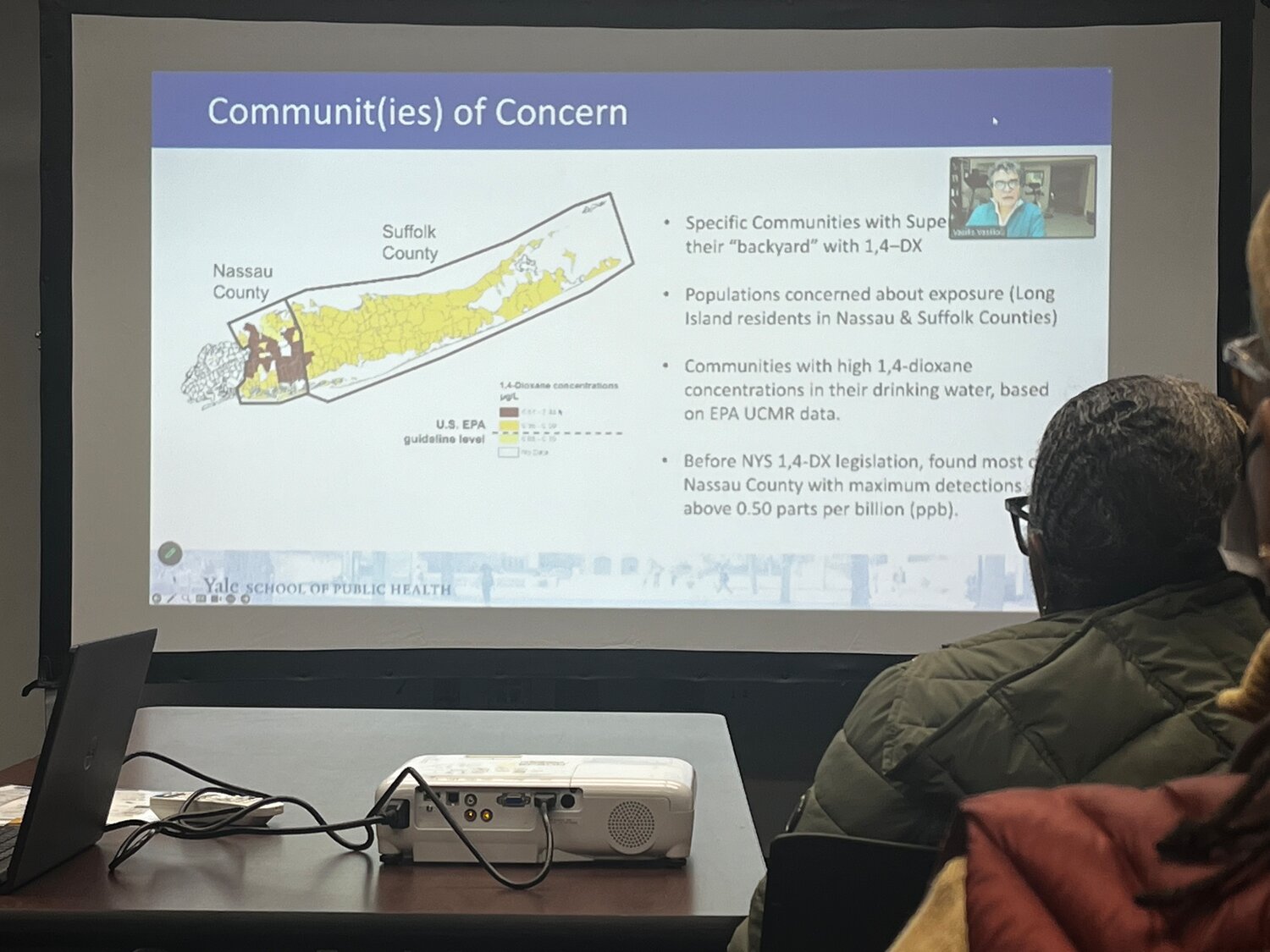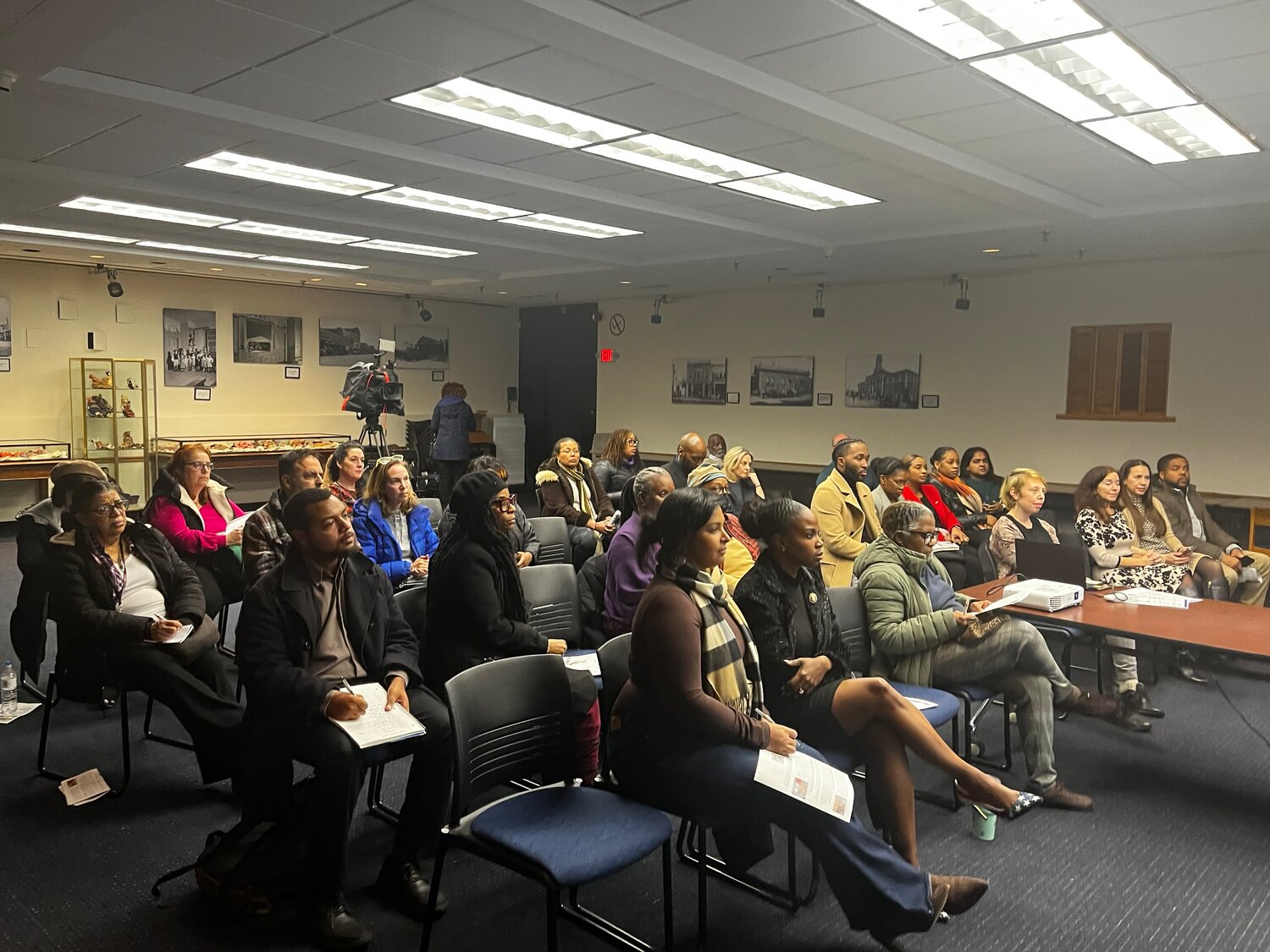Is the water threatening our health?
Yale to study impacts of what comes out of the tap on L.I. residents
There are chemicals in your drinking water.
That much we’ve known for a while. The Town of Hempstead’s most recent water quality report, in 2022, revealed that the town found high levels of 1,4-dioxane — a powerful chemical that is suspected of causing cancer — in Uniondale’s water. Though the report acknowledged that the concentrations it detected were above the state’s maximum contaminant level for 1,4-dioxane, the next sentence aimed to assure residents that the water is still safe for consumption and “does not pose a significant health risk.”
The Environmental Protection Agency has classified 1,4-dioxane as a “likely human carcinogen.” According to the EPA, even exposure to low levels of the chemical over a lifetime are thought to increase the risk of cancer, while higher exposures over a shorter amount of time can “damage cells in the liver, kidney, and respiratory system.”
According to Citizens Campaign for the Environment, a nonprofit environmental organization that works to protect public health and natural resources in New York and Connecticut, the EPA tested over 4,000 water systems nationwide, and found that Long Island had some of the highest levels of 1,4-dioxane in the country, with some water systems in Nassau and Suffolk counties containing over 100 times the concentration listed in EPA’s cancer risk guidelines.
As a result, Yale University announced at the Hempstead Public Library on Jan. 25 that, in partnership with Citizens Campaign, it is planning a Long Island study of the long-term effects of drinking water containing 1,4-dioxane. The study will be led by Vasilis Vasiliou, the chair of Yale’s Department of Environmental Health Sciences.
“We know that Uniondale and the Village of Hempstead have 1,4-dioxane in their drinking water above the New York state standard,” Adrienne Esposito, executive director of Citizens Campaign, said.
At a public information session last week at the library, residents were encouraged to sign up to participate in the study. It will take years to conduct, and the hope is to have a better understanding of how 1,4-dioxane affects residents’ health by 2027. Water and blood samples will be taken from residents to measure the amount of the chemical they are ingesting, and how it affects them over the course of four years.
The first 25 samples were taken in 2023, but Yale is looking to encourage as many residents as possible to take part so it can generate more accurate results.
“The goal is to get more scientific data on if 1,4-dioxide is impacting human health, and if it is, how is it impacting human health?” Esposito said. “There’s lots of studies on animals, but there’s no study on humans, and we need to get more information so we can have better public health policies and make sure people are being kept safe.”
According to both the Centers for Disease Control and Prevention and the National Institutes of Health, there have been few studies on 1,4-dioxane exposure and cancer in humans.
Lawrence Smith, a research analyst with Health Water Consultants, told the Herald that the molecules that make up 1,4-dioxane are actually smaller than water molecules, making it very difficult to effectively filter out.
“This particular contaminant is very different from anything else,” Amanda Field, a former water commissioner for the hamlet of Plainview, said. “There is no home filtration system that can take this out.”
And now, with a recent study by the National Institute of Health showing plastic bottles are contaminating consumers with microplastics, Smith was left wondering what people in this community would have to do in order to finally get clean, safe, and affordable drinking water.
John Reinhardt, the commissioner of the Town of Hempstead’s water department, has assured residents that all of the detected chemicals in the town’s water supplies, including 1,4-dioxane, are at or under the legal limits allowed, which is one part per billion for 1,4-dioxane. But according to the Environmental Working Group, a national nonprofit organization that focuses on environmental and public health issues, research, and advocacy, legality does not equate to safety.
The EWG conducted its own study on the town’s water quality in 2021, using Uniondale’s tap water. It found a total of 45 contaminants, none exceeding legal limits but nine exceeding the organization’s own health guidelines for safe consumption, including 1,4-dioxane, which was detected at levels almost two and a half times greater than EWG’s guideline of .35 parts per billion.
According to EWG, the national average for 1,4-dioxane in the water supply is 0.06 parts per billion, and in New York state, 0.09 parts per billion. But in Uniondale, the concentration exceeded 0.82 parts per billion — almost 14 times greater than the national average and more than 9 times the state's average.
“Hempstead has been working with Long Island’s leading engineering professionals in the water treatment industry,” the town said in their 2022 report, “to construct the necessary treatment systems to remove this compound from our water.”
But Pearl Jacobs, a community leader and president of the Nostrand Gardens Civic Association, said she is not happy with the town’s efforts to improve water quality.
“Why does every single thing in Uniondale need to be fought for?” Jacobs asked in November, at a Greater Uniondale Area Action Coalition water quality meeting. “Who is looking out for Uniondale? It is definitely not our elected officials. We always have to look out for ourselves.”
To learn more about Yale’s study and how you can participate, visit TinyUrl.com/4smmvuxn.

 50.0°,
Overcast
50.0°,
Overcast 







